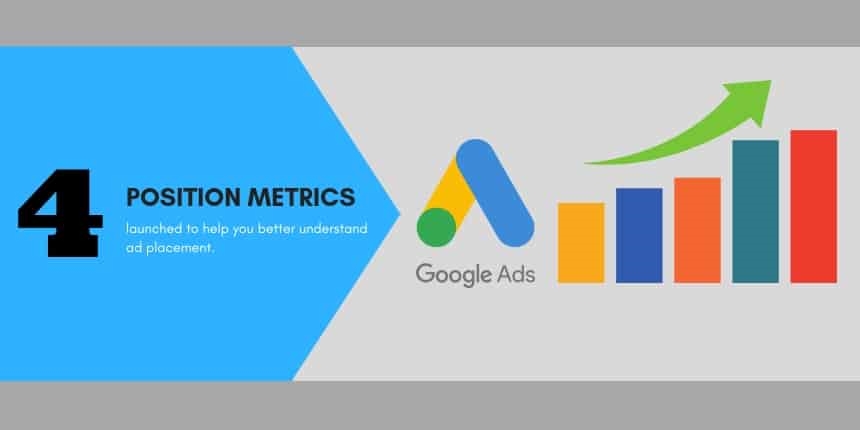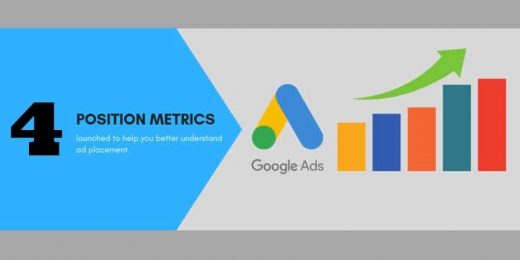Google Eliminates Paid-Search Average Position Metric
Google Eliminates Paid-Search Average Position Metric

On February 26th, Google officially announced that it will sunset its paid-search average position metric in September 2019. This is the most significant change seen in search advertising in years.
Many brands are now wondering how this will impact their costs, presence and prominence, and efficiency on the search engine results page This change could create widely different results for advertisers, if not planned properly, resulting in big winners and losers come September (and the holiday period) 2019.
Google’s rationale is that it does not believe this metric contributes much value for understanding prominence. As such, Google introduced four new metrics for prominence (Absolute Top Impression Rate, Top Impression Rate, Absolute Top Impression Share, and Top Impression Share). This, however, is a very limited view, focused only on prominence.
Many of us who grew up learning the inner workings of search engine marketing (SEM) and associated deep analytics believe other factors must be considered.
- From a competition perspective, elimination of the average position metric is bound to create a greater premium for top-of-page paid-search ads
- From an analytics perspective, the position metric served as a validation mechanism for understanding the inflection point for efficiency of search ads, as opposed to just looking at prominence — particularly important if an advertiser chooses to use Google’s automation, thereby relinquishing the ability to place checks and balances on Google’s performance efficiency.
- From a placement perspective, ad extensions — which more than doubled the space an ad occupied in the top position — may become harder to attain. This can force advertisers to spend a lot more, for worse efficiency.
Shorter-term, advertisers can expect to see major variances in cost-per-click (CPCs), as well as noticeable changes in competition level on search terms — especially for prominent positions. Tentpole events (Black Friday, Cyber Monday, The Super Bowl) will likely see the greatest impact.
Branding campaigns — generally focused on position goals — could be affected. If you are a CPG advertiser, OEM, retailer, telco carrier or any other business with a physical disconnect between search and the point-of-sale, it’s likely you will have to increase your cost disproportionately pushing for a higher impression share, without a corresponding increase in attributed sales.
Preparation prior to September 2019 will be crucial to avoid variances and maintain the efficiency of your campaigns.
Advertisers who are prepared will be at a distinct advantage, compared to those who convert to the new model without fully accounting for the new auction dynamics:
- Add Efficiency to Prominence: In addition to prominence, average position is also used for inflexion analysis, and serves as a validation proxy for efficiency. Advertisers must establish new efficiency KPIs. Until you have a solid measure of efficiency in place, you will likely have no choice but to push for a higher impression share. If you couple this with “black-box” automation, your efficiency factor will degrade very quickly. As in any auction, your bid plays a dual role: it impacts your probability to win the auction, as well as the propensity of competition you face directly. Advertisers must maintain control and visibility into exactly how much you’re paying for position, and how this is impacting their efficiency.
- Revisit Advanced Analytics: For advertisers that leverage advanced analytics, the change will require rewriting/updating their algorithms now, to establish new efficiency KPIs, using a combination of new and existing metrics. Advertisers that rely on automation should be particularly aware of this and establish boundaries to avoid just bidding for high impression share and running into fast budget depletion/over-runs, without a corresponding improvement in search performance.
- Monitor Competition: As discussed earlier, this change will likely increase competition. As such, it will be crucial for advertisers to keep an eye on competition, and there are many ways to do this.
It’s critical that brands keep overall performance objectives at heart, no matter what changes Google or any other publisher makes. By taking an objective perspective in your reaction to such changes, you can preserve your performance while continuing to scale your marketing campaigns.
(8)


